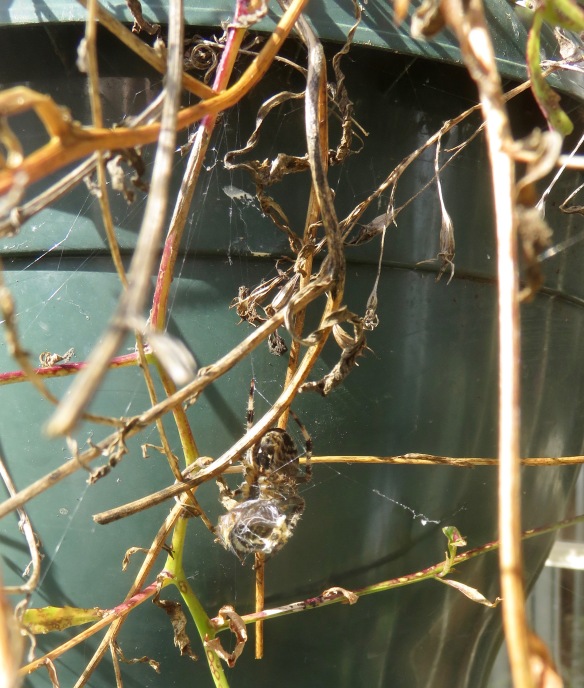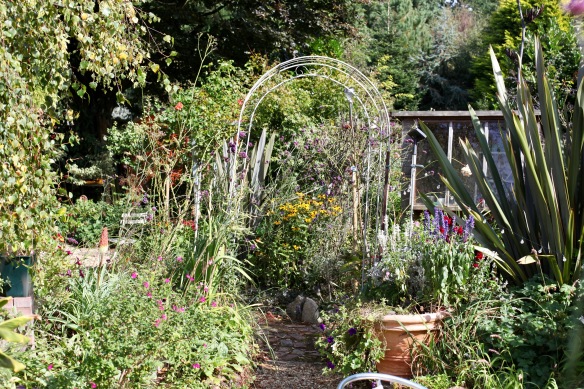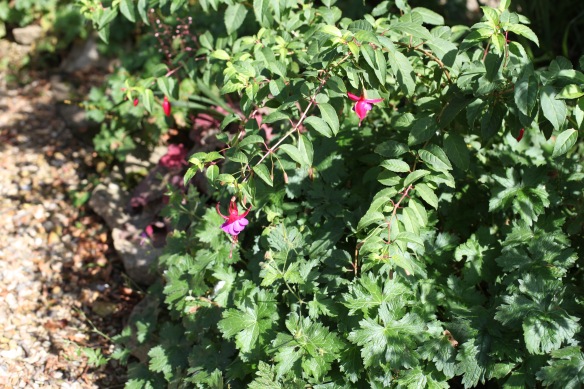CLICK ON IMAGES TO ENLARGE. REPEAT IF REQUIRED.
Susan Rushton’s post earlier today featured colchicums. There are a number of different varieties of these autumn crocuses.
Ours are different, and a bit battered by wind and rain. I think they are speciosum. Here they are Susan.
Whilst on my way to obtain the first two images above, I spotting a spider waiting on its web. As I watched it hauled itself up aloft and I just left it to get on with it.
Later, I walked the same way to capture the flowers in a different light.
The spider was gloating over its meal of the day. That was one bee that would seek no more pollen.
It is, of course, the season for these insectile predators. I couldn’t even photograph these snapdragons without one poking its nose in.
The antirrhinums appear to the right of this view through the arch framing the Oval Bed.
The kniphofia to the left is one of many in the Weeping Birch Bed
blending with the begonia in a hanging basket behind.
We still have many thriving fuchsias
including one festooning the New Bed.
This afternoon I finished reading ‘Phineas Finn’, the second of Anthony Trollope’s six Palliser novels. This follows the fortunes of the eponymous hero as he ventures into the Victorian Parliamentary world. Without giving away any of the story I can say that, against the background of conflict over reform bills in the 1860s, we have love triangles; fraught courtships; political and matrimonial intrigue; and a view of social history of a time when Members of Parliament needed independent incomes in order to fund their campaigns and carry out their duties if elected; and when women were dependent upon submission to their husbands.
Trollope’s lengthy work is rendered readable by his elegant, flowing, prose, which may not suit some of today’s readers requiring shorter, more racy works.
The author is clearly in sympathy with the status of women, especially those trapped in unhappy marriages. Perhaps that is why, as stated by J. Enoch Powell – himself a controversial politician active a century after the period of the book – the female characters have rather more depth of study than do the males.
Powell’s introduction is sound, and he was aptly chosen by the Folio Society whose 1989 edition I was reading.
In my review of ‘Can You Forgive Her?’, I expressed my disappointment in the illustrations of Llewellyn Thomas. I am no less enamoured of those he has made for the current volume, so I won’t reproduce any.
This evening we dined at Lal Quilla in Lymington. My main meal was Goan lamb, while Jackie’s was Chicken shashlik. We shared special fried rice, a paratha, and onion bhaji; and both drank Kingfisher and the customary complimentary Bailey’s.











